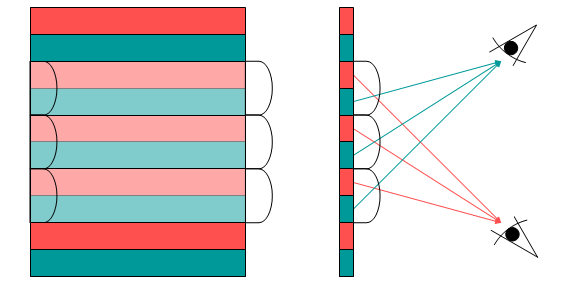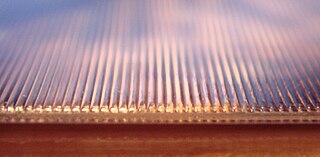
The Agamograph as an expression of time to master Yaacov Agam
, 3 min reading time

, 3 min reading time
Many there are the artists that have contributed art history but, there are not so many of whom we can state that have developed a different way of making art. One of these artists is, without a doubt, Yaacov Agam. And the thing is that Agam is not only an artist but also a thinker and philosopher aside of a great student of the Kavala; of all this synergy of thoughts, the agamograph arises.
What is an agamograph? Well, as a start, it is important to know and understand the main characteristics of Yaacov Agam's art. His work is influenced by Judaism and as it happens in this iconoclastic religion, Agam has never shown figurative motifs in his works and, since his beginnings in the fine arts he's always been an abstract artist. Another particular feature in Agam's art is the use of colours, whose study and usage he learned at the Bauhaus. These colours stand out for being very vivid, brilliant and varied in all his creations. Once again, choosing the colours that appear in his works has a straight relationship with Jew religion since Yaacov Agam considers the rainbow as the first gift from God to mankind. In Hebrew, the name of Jehovah is Mehaveh Ou-Mithaveh, which means "constant change" and this is the key to understand Agams work, whose essence is depicting this concept.
Regarding Yaacov Agam, until mid-twentieth century, art was static. Taking a look at a picture we can see, in some way, the past because nothing has changed since the artist decided the work was finished. Having this idea in mind, Agam tried to introduce in the middle 50s, time as another factor to consider in the process of creation, and thus he invented the agamograph.
Time cannot be repeated nor be predicted and because of that, when we observe an agamograph we cannot see the same image from different points of view. Each time we move the artwork is transformed. The artist invites us to think that it is not possible to see the totality of his work without moving and interacting with it in space and time.

How does an agamograph work? We'll explain how the most basic one does. We have a surface, paper for example, and we fold it parallel to one of its sides many times in a way that once it is stretched its appearance is a zigzag like an accordion. If we add to each one of the parallel sides of this zigzag the correspondent part of an image and we do it as well with other parallel sides of the zigzag adding different image, the overall has as result a work that once viewed from an angle shows one of the images and viewed from the opposite angle shows the other one. The biggest example of this work can be found on the facade of the Callahan Eye Foundation Hospital in Birmingham, Alabama.


Lenticular technology basis

A lenticular screen
Regarding Agam's graphic works, he has used lenticular technology to create his limited edition agamograph series. This technology works with the same basis as what was explained above but, in this case, the multiple images are fused and shown directly on the paper printed with lithographic media, and it is the lenticular screen that covers the work the one in charge of creating the visual effect that allows us to only view one different image depending on the angle where we stand.